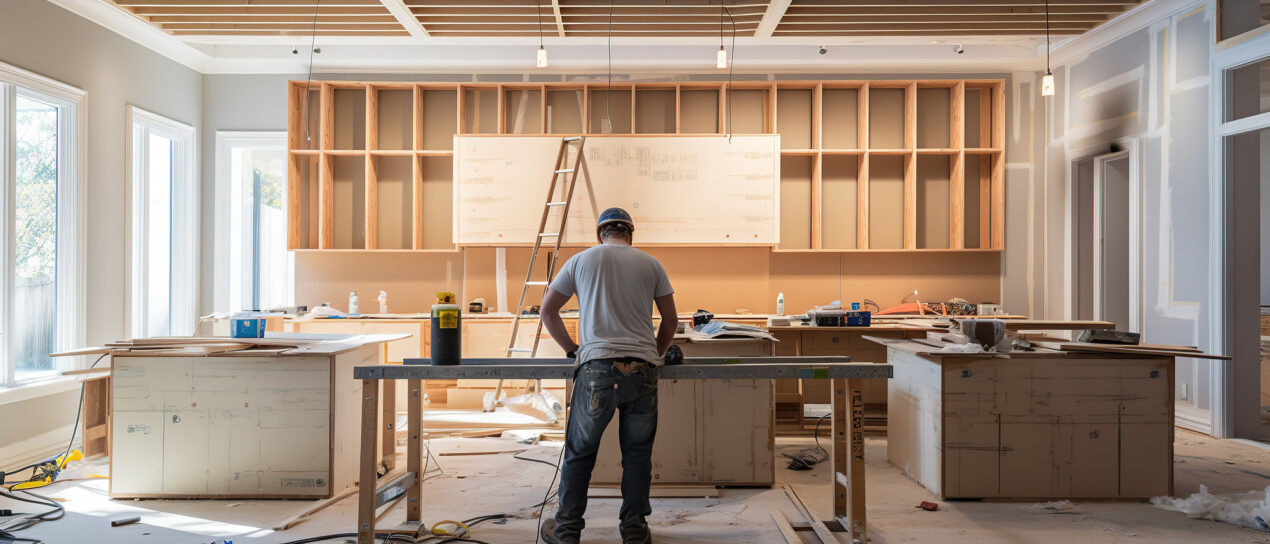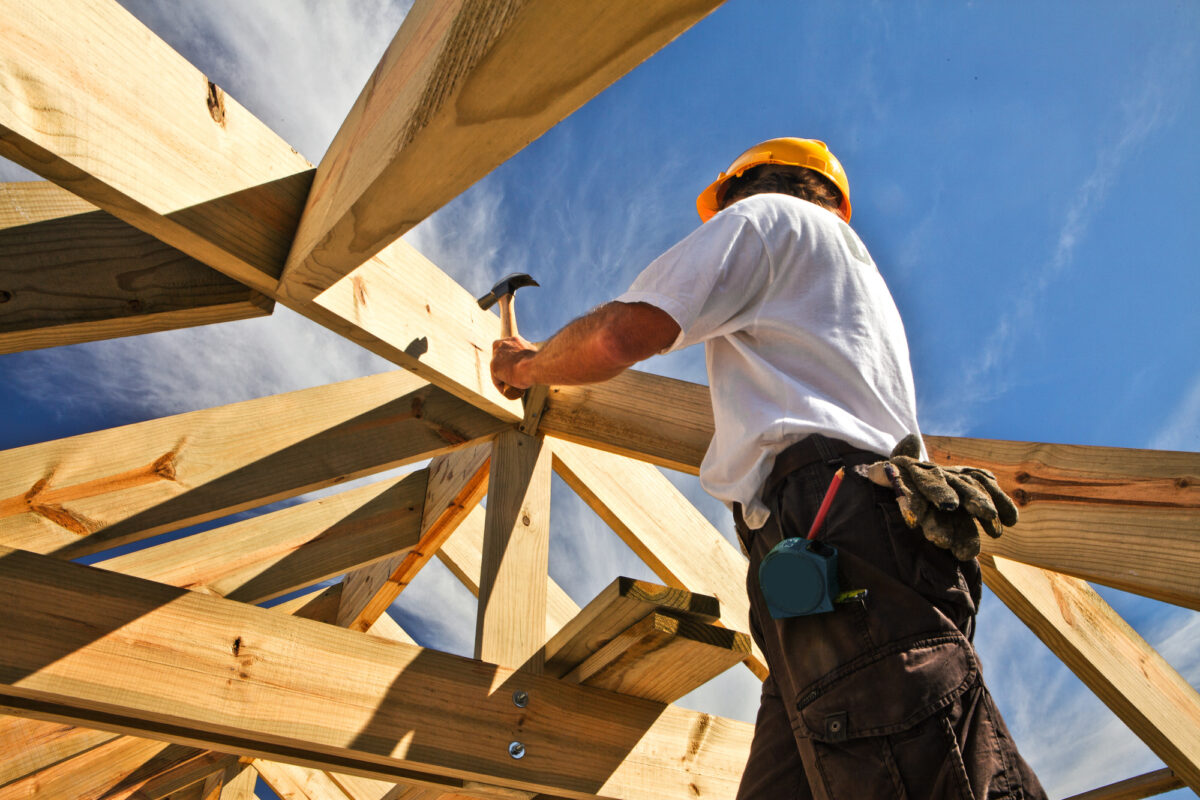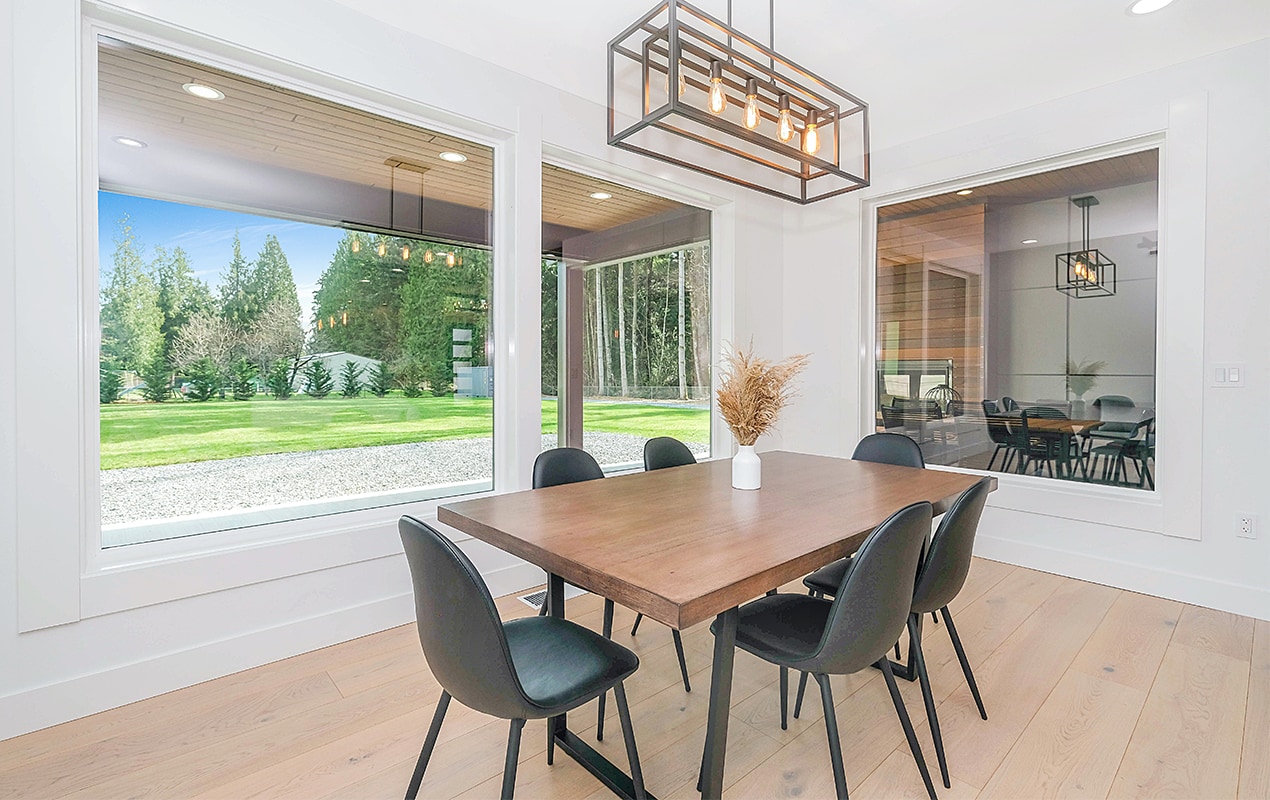Blog
Exploring The Stages Of Custom Home Construction

From Blueprint To Reality: Exploring The Stages Of Custom Home Construction
Indeed, the journey from an initial blueprint to a completed custom home is exciting – one full of important stages that transform dreams into reality. As any custom homeowner knows, seeing your personalized ideas come to life in brick, mortar, and furnishings is incredibly rewarding. Nonetheless, it also requires careful planning, decision-making, and collaboration with a team of professionals. By understanding the key phases of custom home construction, you can set realistic expectations and budget accordingly during your build.
Building your dream home is an exciting journey! This guide outlines the key steps, from blueprints to finishing touches, to help make that dream a reality. For peace of mind, consider a home inspection service in Hamilton to ensure your new home is a safe and sound investment.
Read on to learn more.
Defining The Vision You Have In Mind For Your Custom Home
The starting point when building a custom residence is defining your vision. This involves detailing your must-have home features, preferred building materials, living space requirements, aesthetic preferences, project budget, and so on.
To bring initial concepts to life, many homeowners create an inspiration notebook, fabric swatches, and notes to use on their perfect home. You can do this too. Also, outline how you want each room to look and function based on your lifestyle. Consider your ideal size, number of bedrooms and bathrooms, inclusion of bonus spaces like a home office or theater room, outdoor living areas, and other special details that capture your family’s wishes.
For instance, if you’re on the lookout for a lot you want to build on your dream home, you can check out the succeeding points below or read this blog post.
Understanding Structural Elements
While you don’t need an engineering degree, grasping the basics of structural anatomy demystifies why certain regulations or changes may apply for safety. Variables like hurricane, earthquake, snow load, or flood zones influence engineering specifications, so regional areas build appropriately hardy structures rated for realistic environmental threats based on location.
Meanwhile, load-bearing walls handle building weights transferred down properly, versus partition walls simply delineating rooms. Wall openings require headers or support so heavy ceiling loads don’t lead to collapse. Shear values safeguard against sideways sliding during storms. Terms like mudsills, posts, joists, and trusses comprise your inner skeleton. Know that optimal exterior siding and roofing materials resisting negative climate are effected over decades of use.
Home Construction: Choosing The Right Builder
You need a reputable builder who listens to your goals, provides recommendations based on years of experience, and makes you feel comfortable during the construction process. Interview several builders while checking references, online reviews, credentials, warranty details, and evidence of local projects similar to your vision. Make sure you connect well with the builder’s communication style and level of responsiveness.
The right home builder alleviates all of the construction-related stress rather than amplifying it. Always verify that potential builders are properly licensed, bonded, and insured.
Architectural Designing And Permitting
Now, the construction project transitions from wish lists to technical reality thanks to architects, interior designers, and permitting coordinators informing what’s feasible structurally and within codes.
Architects assess your desires to create coordinated schematic layouts and detailed material plans balancing aesthetics with function. Interior design experts, meanwhile, recommend paint colors, furnishings, lighting, and wares that suit your decor goals. Expect iterative collaboration perfecting preferred specs inside and out.
With finalized illustrations and your contractor confirmed, the permitting process gains municipality approvals, ensuring zoning allowances, safety regulations, setbacks, and inspection protocols are compiled as legally sound. Lengthy lead permit approval times often dictate construction sequencing, so budget for potential delays or revisions if desired.
Coordinating With The Subcontractor
General contractors oversee each trade team, like electricians, plumbers, framers, roofers, and more. Open dialogue keeps work completed on schedule while meeting quality benchmarks.
Ensure thorough vetting and licensing of all subcontractors before they step foot on your worksite. Make sure to clarify ahead where job site access points are established along with protocols like designated parking, material storage zones, equipment usage, working hours, site cleanup, and access to power sources or restrooms. Remember, mutual understanding paves the way for smoother build momentum.
Selecting The Perfect Site For Your Home
An ideal homesite provides the blank canvas to build your fully customized refuge. Carefully consider the size, terrain contours, soil conditions, vegetation, orientation for sunlight, available utility access, and neighborhood setting early when evaluating lots. Natural assets like ponds, rock formations, or trees help inspire design ideas.
Allow enough square footage for floorplans with buffer space for outdoor living too. Factor in foresight for potential additions someday. Blueprint positioning adapts best on relatively flat, well-draining soil avoiding steep slopes or wetlands. Urban infrastructure makes construction simpler if available versus rural locations needing well and septic systems prepared.
Breaking Ground With Land Preparation
Upon purchasing your homesite, the real visible signs of progress start with land preparation work. Using heavy machinery, construction crews complete necessary clearing, grading, trenching, and installation of utilities functioning beneath your future foundation and proper drainage.
Soil testing analysis determines load-bearing capacity while supporting proper structure elevation and removal of unsuitable soils if present. Compaction helps prevent undesirable sinking or shifting long-term. Plus, tree removal services may take place to clear the build site.
Planning And Ordering Major Purchases
With finishes like cabinets, countertops, or flooring requiring longer fabrication lead times, use the early months immersed in design work to start finalizing aesthetic selections impacting multiple rooms. Consult showrooms and browse inventories to pin down durable and high-quality products that suit your budget in order to place orders in advance.
For structural supplies like lumber and concrete, the general contractor does the sourcing based on current pricing to benefit the homeowner. Have interior design selections like plumbing and lighting fixtures, knobs, and tiles ready for deployment when rough-in stages open. Remember, shopping early prevents project delays caused by waiting on backordered wares.
Home Construction: Laying The Foundation
The crucial framing begins by pouring a home’s solid concrete foundation, which provides the underlying support and stability on which everything else relies.
Inspect the carefully leveled formwork and steel rebar responsible for reinforcement. For custom homes, the slab foundation generally proves most popular, allowing a downstairs level to extend across the entire footprint. Other foundation options include pier and beam, crawl spaces, or basements. The poured footing basement walls rise from the ground up, waterproofed and reinforced to uphold what’s above. As concrete cures, anchor bolts connect the sill plate securing exterior walls.

Photo from Adobe
Home Construction: Framing The Structure
Now the visual form of the home truly takes shape during framing, one of the most exciting build stages. The framing carpenter crew constructs your model’s skeletal system from the ground up, providing a clear impression of spaces and structural elements. Workers use various beams, posts, trusses, rafters, and floor joists comprised of meticulously measured and cut lumber.
Weight-bearing walls need doubled up on boards and studs for sufficient support, while partition walls fill in spaces with simpler frames. Careful planning prevents wasted supplies or incorrectly sized openings. Framing not only defines room boundaries but also allows the later installation of insulation, electrical work, plumbing lines, and ductwork.
Enclosing With Roof And Exterior Work
The essential next step is to enclose the home to guard against weather and intruders while finishing the structural shells. Roof work from truss assembly to final shingles provides crucial overhead coverage, using layered waterproofing elements like felt paper and ice shields.
Exterior crews wrap the entire building envelope with wall insulation, house wrap barriers, and decorative finishes like wood, stone, stucco, vinyl, or brick veneer. Windows and exterior doors seal the structure while lending your curb appeal a personal touch with custom aesthetics. Garage doors also utilize insulation and trim to complement the whole composition harmoniously.
Roughing In Systems And Inspections
Before concealing inner walls, licensed electricians and plumbers work in tandem to ‘rough-in’ these intricate home systems branching everywhere required. Correct positioning allows lighting fixtures, switches, receptacles, HVAC components, venting, piping, drains, and more to integrate efficiently. Carefully planned layouts prevent hot water lines from freezing, avoid sewer gas odors, deliver balanced HVAC airflow, and reduce fire hazards with proper wiring gauges. Review plans with subs to perfect final details like fixture styles.
At this stage, municipal inspectors closely assess in-progress electrical, plumbing, mechanical, and framing elements to ensure standards compliance before greenlighting the next phases.
Installing Drywall And Insulation
Drywall sheets fastened to studs, then finished with seam tape and smoothing joint compound, leaving your walls and ceilings ready for paint or wallpaper. While exposing wiring is no longer possible, outlets punch through easily. Concurrently, dense batt insulation stuffed tightly in wall cavities, floors, and the attic regulates thermal comfort and energy expenditures for years ahead.
Inspectors may return to check adequate insulation meets codes in your region before it gets covered up. Holes cut to fit around outlets and wiring do weaken effectiveness slightly, but high-density foam sealants prevent cracks and gaps.
Hanging Doors And Installing Trim
Interior doors mount on hinges to jambs, partitioning off rooms with privacy and sound buffering when closed. Selections range from solid wood to hollow core to glass paneled. Include desired hardware and coordinate trim color for visual flow.
Finish experts also nail up complementary baseboards, window casings, crown molding, and door trims as the perfect completing touch. Measure carefully before cutting miters to cover seams cleanly. Level hanging confirms every detail aligns neatly. Pay close attention to fire code regulations on garage to interior door thresholds, which commonly get inspected again at this stage.
Flooring Completion In Major Rooms
Now, the next step is to transform the bare subfloors into stylish and finished flooring. Choices span hardwood and groove boards, ceramic or porcelain tile, natural stone, woven carpet, resilient vinyl plank, or luxury vinyl tile. Each option presents unique pros and cons in maintenance, durability, comfort, and pricing.
The project manager sequences work appropriately as cabinets are often installed first before tiling backsplashes or laying wood floors and transition strips. Expect some adjusting to fit intricacies neatly, like sculpting final row widths or cut-around for plumbing fixtures and irregular corners.
Cabinet And Countertop Installation
Kitchen and bathroom spaces really take shape once the cabinetry installation is finished. Custom designs from your interior decorator work with countertop dimensions for a streamlined look. Careful measurements by skilled fabrication specialists ensure a precise fit, including any specialty organizational inserts and slide-out shelves. Matching built-in or freestanding vanity components leads to convenience and storage.
Deploying Interior Finishes And Trim Details
Painting, lighting elements, railings, and hardware represent the beautifying interior touches that effectively transform a new construction into a comfortable home. Painting crews first prepare surfaces to allow aesthetic coatings to adhere cleanly and smoothly across walls, ceilings, millwork, and doors. Whether neutral, vibrant, light, or dark, select signature paint hues expressing your style.
Coordinating lighting fixtures brighten up both form and function via recessed cans, track lighting, chandeliers, and lamp choices. On the other hand, railings provide safety and visual appeal alongside stairways or balcony spaces indoors and out. Cabinet hardware, hook sets, bathroom accessories, and door levers uniformly perfect all rooms with the right united finishing touch.
Landscaping Of The Grounds And The Exterior
The outdoor environment deserves just as much forethought as your interior design to ensure holistic living space pleasures. Mature trees or green foundation shrubs strategically soften and frame the architecture. Flower beds, stone paths, and accent planters inject color alongside lawns and privacy fencing or buffers. Don’t neglect drainage considerations like rain garden flow patterns or dry creek beds to prevent flooding and foundation damage.
Low-voltage, energy-efficient exterior lighting illuminates walkways and highlights focal points after dark for gorgeous curb appeal around the clock without excessive energy waste.
Doing Final Inspections And Obtaining A Certificate Of Occupancy
Before you start moving in furniture pieces and your beloved belongings, your custom home must pass final municipal inspections related to energy codes, health and basic safety requirements, and the like.
An assigned inspector checks that electrical, plumbing, mechanical, and structural elements are soundly completed and functioning well. They ensure the proper permits are closed out, no hazards present risk, emergency egress meets standards, and your family will remain protected as residents. You may need partial re-inspections if issues arise before receiving an official certificate of occupancy.
Final Thoughts
When planned out properly with clear milestones, a fully-realized custom-built home minimizes stressful uncertainties, culminating in a personalized living space haven. From establishing initial ideas to collaborating with builders and designers, carrying out methodical construction sequences, completing vital inspections, and so on, enjoy checking items off your master list.
We’d also like to highlight the importance of a meticulous post-construction cleanup, with the role of post-construction cleaning services assisting in transforming your newly constructed space into a ready-to-live-in home. With realistic expectations about the multi-month timeline spanning start to finish, soon you’ll receive keys to your newly minted residence tailor-made to match your household’s lifestyle. Plan your home construction from dream to reality by following this essential foundation-to-finish checklist today.














